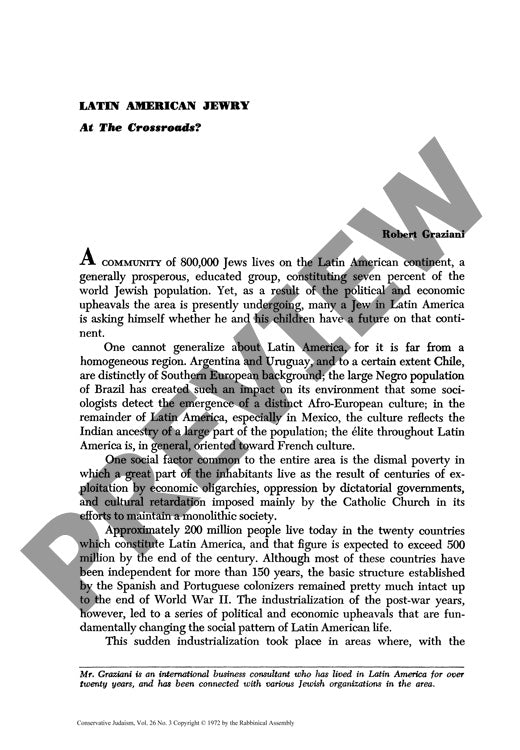Latin American Jewry at the Crossroads
Couldn't load pickup availability
Political and economic upheavals across Latin America in the early 1970s placed the region's 800,000 Jews in an increasingly precarious position, caught between the competing forces of military dictatorships, an activist Catholic Church, and radical leftist movements. Through qualitative analysis and observational methodology grounded in extensive regional experience, this research maps the complex challenges facing Jewish communities primarily concentrated in Argentina (500,000), Brazil (150,000), Uruguay (50,000), Mexico (40,000), and Chile (35,000). These populations, largely descended from Central European immigrants and Holocaust survivors, had achieved remarkable economic success and established robust institutional connections with Israel and the United States. Yet their stability grew increasingly tenuous amid rising xenophobic nationalism and ideological polarization. Significant Jewish emigration from Chile following Allende's election exemplifies the broader regional pattern of communities struggling to preserve their Jewish identity while navigating hostile political environments. The analysis reveals that Latin American Jewry's survival hinges critically on continued U.S. influence in the region and sustained support from American Jewish institutions, particularly in maintaining vital rabbinical leadership and educational resources for community continuity.

More Information
-
Physical Description
-
Publication Information
Published 1972
ISBN
-
Publication Credits
Robert Graziani

